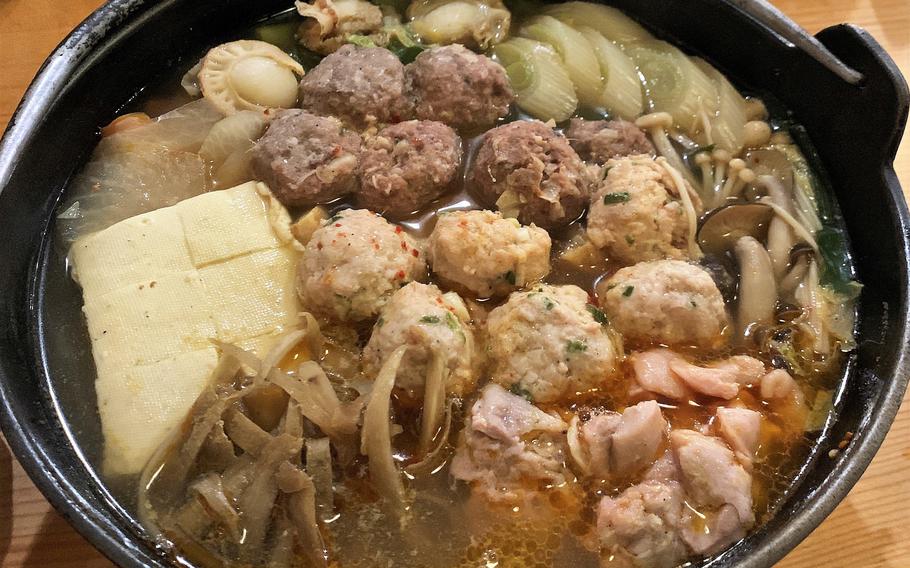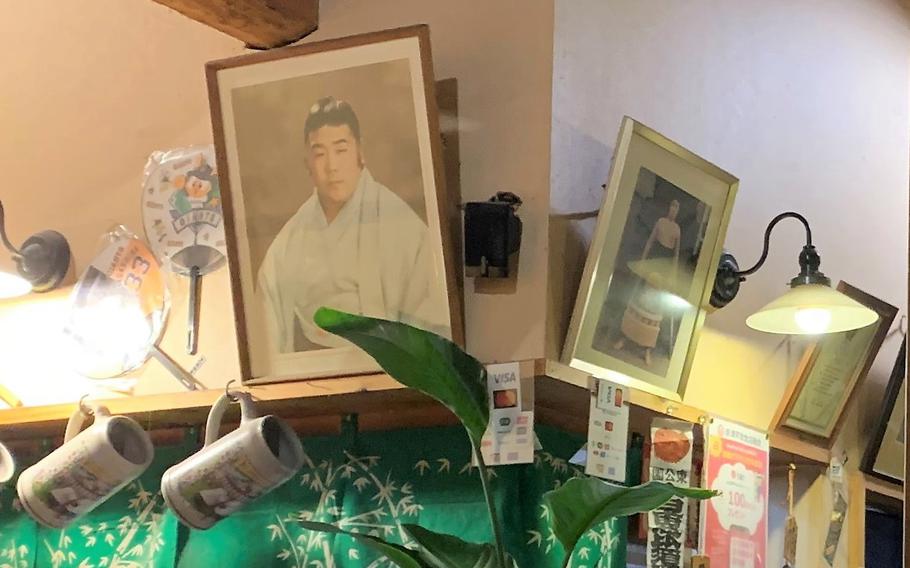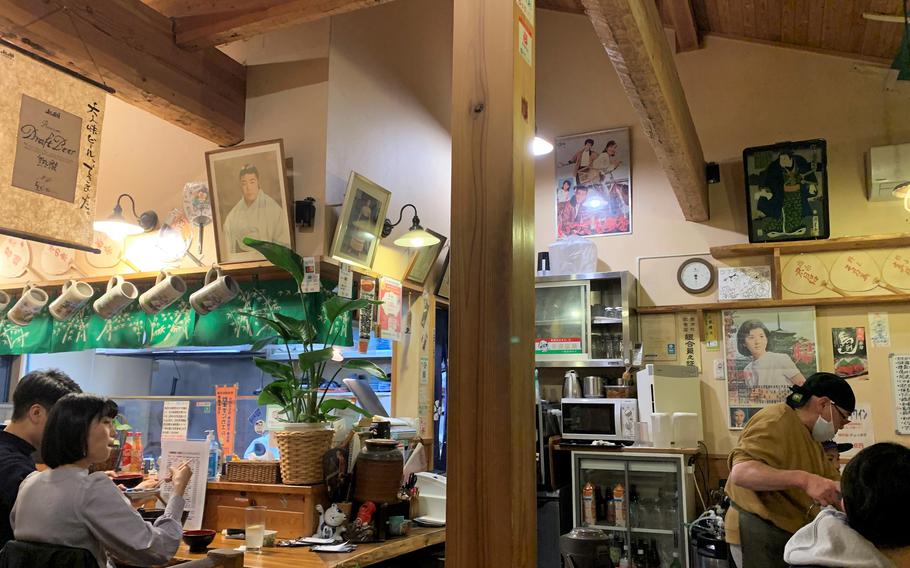
Daicha-an's chanko nabe is protein-heavy with various kinds of meatballs, tofu and chicken pieces. (Kevin Jenq)
A 3 1/2 -hour drive northwest of Tokyo puts you in the hot-spring town of Kusatsu Onsen, a worthwhile trip for the chanko nabe – sumo stew – at local eatery Daicha-an.
The chef, also the owner, certainly knows his stew; he’s a former sumo wrestler. Chanko nabe is the traditional meal served at sumo training tables.
Daicha-an is an intimate venue. It has only four counter seats and three tables in a tatami room, so it’s often fully booked. Hungry visitors can make a reservation by phone.
The owner doesn’t speak English, but he was patient enough to work with our limited Japanese, bolstered by the few restaurant phrases we know — “Yoyaku dekimasuka?” (Can we make a reservation?) — and Google Translate on our mobile phones.
The cozy restaurant interior is lined with honey-colored wood paneling. Retro movie posters and prints depicting sumo wrestlers decorate the walls.

Framed photographs of the chef in his sumo wrestling years hang above the bar. (Claire Jenq/Stars and Stripes)
One framed photograph of a young, black-haired sumo wrestler above the bar seemed familiar — that certain look in the wrestler’s eyes. When the chef emerged from the kitchen with a large, steaming pot of chanko nabe, I realized why.
I gestured to the photograph and to our server. Without a word, he left and returned to our table with an album full of 4-by-6 photographs, the pictorial story of his career as a young sumo wrestler.
We paged through the album while enjoying the delicious chanko nabe. The miso-based soup had a protein-heavy mix of tender chicken and fish meatballs, chicken thighs, scallops and tofu as well as mushrooms, burdock roots and leeks. A drizzle of chili oil made each bite more addicting.

Retro movie posters and prints depicting sumo wrestlers decorate the walls at Daicha-an. (Claire Jenq/Stars and Stripes)
The price varies by serving size. A two-person serving is 3,000 yen, about $20; a six-person serving, the largest size offered, is 9,000 yen. At a little less than $10 per person, the hearty stew is a steal.
The chef returned a few more times to drop off yakitori skewers, such as bonjiri, salt-grilled chicken tail, and seseri, or chicken neck. Finally, he brought out thick udon noodles, my favorite, to help us soak up the rest of our stew.
Before we left, he came back to our table with a poster of sumo wrestler rankings as a gift. The names of the wrestlers get larger according to their increasing ranks.
“Which one are you?” I asked. “What’s your name?”
The former sumo wrestler turned chef looked surprised and paused while he composed a satisfactory answer.
“Dai-chan,” he said, with a shrug.
Daicha-an
Location: 564-3 Kusatsu, Agatsuma District, Gunma 377-1711
Hours: 5 p.m. to 8:30 p.m. Tuesday through Sunday. Closed on Mondays. Check website for additional closures.
Prices: 3,000 yen for a two-person serving of chanko nabe, and up to 9,000 yen for six. Izakaya-style dishes range from 260-750 yen for yakitori, 680 yen for fried food and 800-1,000 yen for sashimi.
Dress: Casual
Directions: A six-minute walk from the Yubatake in the center of Kusatsu Onsen, or 10 minutes from the Kusatsu Onsen bus terminal.
Information: Cash only. Reservations recommended. Online: main-daichaan.ssl-lolipop.jp; Phone: 027-988-8080.